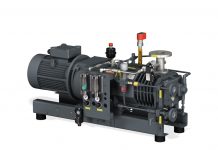Authorisation is a complex process under the REACH Regulation (EC) 1907/2006, which is required for substances identified as a substance of concern and listed on Annex XIV of the Regulation.
The aim of the authorisation process is to control and restrict the sale or use of Substances of Very High Concern (SVHC). A SVHC is a substance that may have serious and often irreversible effects on human health and the environment, for example substances which are classified as a carcinogen category 1A or 1B. Those substances listed in Annex XIV cannot be placed on the EU market or used after the so-called “sunset date” unless an authorisation has been granted for a specific use, or if the use has been exempted from authorisation. An authorisation can only be granted by submitting an authorisation dossier for the specific use to ECHA for evaluation.
Authorisation is a two-step process whereby initially a Member State or ECHA proposes that a SVHC is added to the Candidate List (for authorisation)1. These substances can be tracked on the Registry of Intentions (ROI)2, which is a public list of substances for which a SVHC, classification or restriction dossier is intended to be submitted. In the second step, a substance may be included in the Authorisation List itself (Annex XIV of the REACH Regulation).
Applications for authorisation will only be successful if applicants can demonstrate that the risk from use of the substance is adequately controlled (adequate control route). If not, an authorisation may still be granted if it can be proven that the socio-economic benefits of using the substance outweigh the risks and there are no suitable alternative substances or technologies (socio-economic route).
The application should include the substance identity, the use for which authorisation is sought, a chemical safety report, an analysis of the possible alternatives and, where alternatives are available, a plan to substitute the substance including a timetable for proposed actions. A socio-economic analysis (SEA) is required where the applicant cannot show adequate control of risks. However, it is suggested that a SEA is provided as supporting evidence to demonstrate the impact of the availability of the substance.
The application process requires the investment of time and resources, so companies should consider if this is the best course of action for their business or whether an alternative substance formulation might be more suitable than an authorisation. A robust analysis can help determine whether an authorisation is the best option and will also be useful for compiling an argument to support the application.
If the authorisation route is chosen, applicants must notify ECHA well in advance (i.e. 8 months) of the intended date of submission of an application for authorisation. At the time of notification a pre-submission information session (PSIS) with ECHA can be requested, to ask case-specific questions regarding the regulatory and procedural aspects related to the application.
To aid ECHA with work planning, specific windows for submitting applications have been established with the aim of synchronising the submissions with scheduled meetings. If the dossier is submitted in any of the submission windows, applicants can benefit from the transitional arrangements of Art. 58(1)(c)(ii) of REACH – transitional arrangements allowing the continued use after the sunset date until a decision on the application for authorisation is taken by the Commission. It should be noted that the transitional arrangements only apply if the application is submitted before or at the latest application date and pass the Business Rules check.
Manufacturers, importers and downstream users (DU) can apply and hold authorisations for their own uses or for uses down their supply chains. Therefore a DU can use a substance without applying or holding an authorisation provided that:
n ECHA is notified [Art 66]
n The substance is used in accordance with the conditions of an authorisation granted to an actor further up the supply chain [Art 56(2)]
A company may also supply the substance to his immediate DU for a use, provided that this immediate DU holds an authorisation for that use [Art 56(1)(e)]. In other words, a DU holding an authorisation:
n Can cover the placing on the market for his use(s) only one level up his supply chain
n Cannot cover use(s) further up the supply chain
It is important to note that the rules regarding who can be the authorisation holder may have the potential to cause supply disruptions if there are missing links in the supply chain.
The application for authorisation is a complex process requiring a new dossier to be submitted detailing the use of the substance. The key message is to start and prepare early enough to ensure your application contains all the documentation required. Check ECHA’s website regularly to follow new developments and track if a substance is of particular interest.
For more information on Authorisation or any aspects of REACH please contact JSC International Limited. JSC is a Regulatory Affairs consultancy firm providing regulatory support for companies on REACH, CLP, Biocides and Agrochemical legislation.
Samantha Wright & Richard Elsmore
JSC International Limited
The Exchange, Station Parade, Harrogate, North Yorkshire HG1 1TS
Tel: +44 1423 520245
Fax: +44 1423 520297
e-mail: sam.wright@jsci.co.uk
richard.elsmore@jsci.co.uk
Website: www.jsci.co.uk













